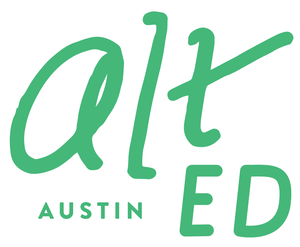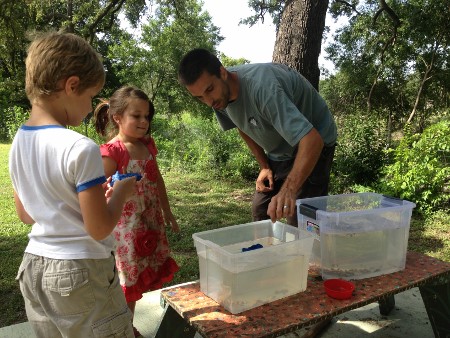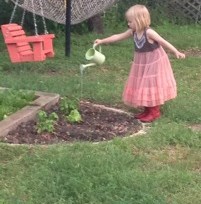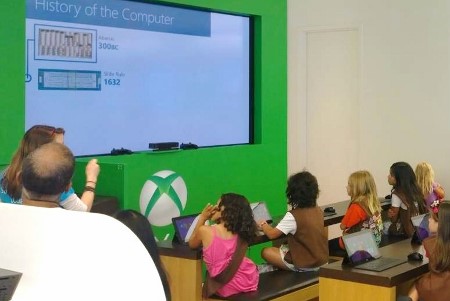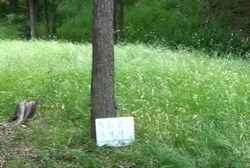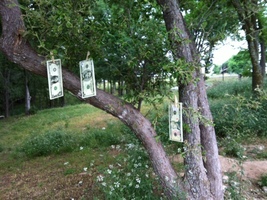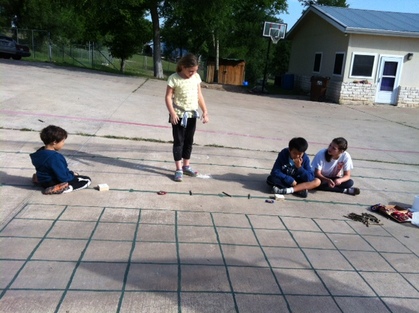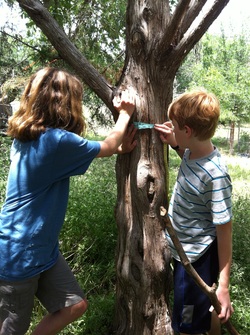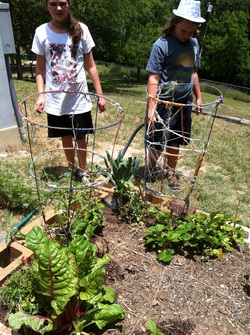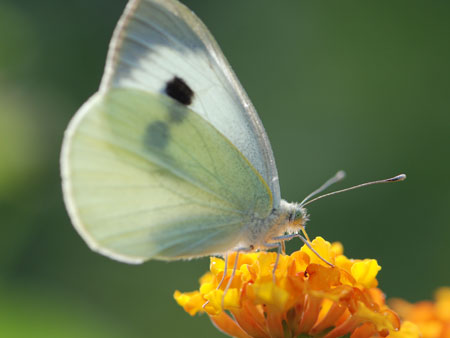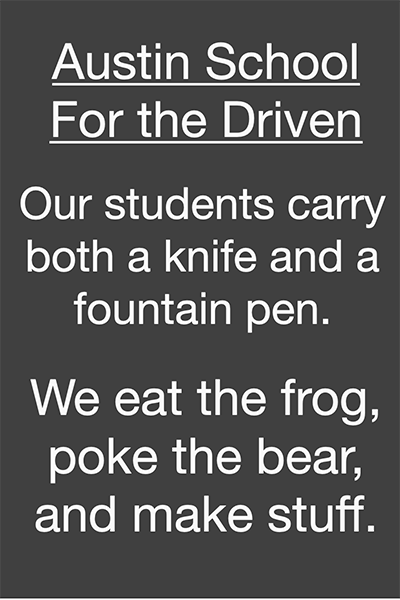My school is my chalkboard
/Guest contributor Peter Hobbs is a cofounder and teacher at Progress School, a relationship-based learning community in Central Austin where work and play nurture whole child development. The school is currently enrolling students five to ten years old and now offers options to attend one or two days per week in addition to its three-to-five-days-per-week program. Progress School is hosting an open house on Saturday, August 9, from 10 a.m. to noon.
I remember cleaning erasers and chalkboards in elementary school. Every student had a turn. You’d have to take the erasers outside. When you clapped them together just right it would make quite a bang. If you got too excited you just might end up with a face full of chalk dust. After you were done with the erasers, you’d go back inside, fill a bucket with water, and soak a big yellow sponge.
It was on a Friday, I think, that the chalkboards would get cleaned, so there was a week’s worth of writing and erasing. With the wet sponge you’d wipe the entire board clean. I remember starting at the top from one end and making columns. Up and down, up and down, up and down, like the Karate Kid. If you weren’t too careful or went too fast you’d lose the sponge and maybe even catch a fingernail on the board. Arghhhhhh!!! Column after column, the chalkboard would become a dark glistening green, only to slowly dry and dissolve into a dull blank board, awaiting another week of spelling words, random sentences, math facts, lists, rules, names, diagrams.
I didn’t know or even imagine back then that I would become a teacher myself someday. Perhaps watching a teacher stand in front of a chalkboard all day wasn’t very inspiring (I can’t even remember her name). Maybe it wasn’t a profession that was really encouraged or sincerely valued, in spite of the lip service paid to the importance of teachers in our society. And yet, I am a teacher. I don’t, however, stand in front of a chalkboard (or a dry-erase board for that matter) all day. I teach at Progress School, where, I like to think, we put a little more “progress” into progressive education.
At Progress School, the entire school is my chalkboard.
Schools have changed since the days when you would see chalkboards in every classroom and the desks were arranged into a uniform grid. Resources have improved in quality, seating arrangements have broken classes into groups or stations, and curricula have identified additional skills and knowledge that are deemed essential for every student’s comprehension. But there is a fundamental difference between change and progress where education is concerned. Change is often static and superficial. Progress is living and evolving. Teachers can change the design of a classroom (provided they have the permission of the administration), but how does education progress beyond what we expect from a school? How could education evolve if teachers and schools had the freedom to live the innovation they aspire to create?
At Progress School I have the freedom to teach because our students have the freedom to learn. We have designed our school so as to allow children to learn wherever, however, and whenever their innate desire to learn takes them. What our students find is that you don’t just go to school to learn some stuff like math and how to read and spell; you learn how to learn. Moreover, you learn that reading, writing, and arithmetic are only as important as the relationships in your life that allow you to share and use the knowledge you gain.
When you go to Progress School, you don’t learn just from teachers, but from everyone around you. You don’t just learn in class and have fun at recess; you learn that learning happens everywhere and all the time (yes, even when you’re playing):
At Progress School learning happens when you’re snuggled up with a teacher on the couch with a lap full of books you chose to be read (even if it’s the same one three times in a row).
Learning happens when you can go outside whenever you want (except when there’s lightning!), because you just have to run, and you find a 100-foot-long ruler chalked on the basketball court, and you run 5, 10, 15, 20, 50, 100 feet five times, which means you ran 500 feet! Water break!
Learning happens when you want to build a plane in the woodshop, but first you need the A encyclopedia for airplane, and then you need to choose what kind of plane you want to build, and then you find a piece of wood, and then you measure how long the wings should be, and then you get a ruler and draw a line, and then you get a saw, and then you hear “Capture the Flag! Who wants to play Capture the Flag?” and then maybe you work more later, or tomorrow, or next week.
Learning happens when you’re inside helping me measure vinegar for a science experiment this afternoon and you decide to write signs to put up all over the school inviting everyone else to come if they want to come, at what time, and how do you spell today?
Learning happens when you and a friend are bored and decide to get out a puzzle and put it together, but when there’s one last piece, you both want to finish the puzzle, and you start to argue, and it’s not fair, and—hey, why don’t we do another puzzle and I can put the last piece in for that one? Yeah!
And all this could happen in a single hour of a single day at Progress School. Because our students have the freedom to move throughout the school and choose what activities or projects they want to participate in or initiate on their own, I am teaching all the time.
When I have prepared a game about nouns and maybe just one or maybe six students give it a try, I am teaching—even when we turn the game into noun tag and have to go outside.
When I’ve started a project about sedimentary, metamorphic, and igneous rocks and one student asks if he can trace the labels I’ve written in marker and another wants to weigh the different groups to see which is heaviest, I am teaching.
When I am pushing a student on the swing and we’re talking about why Halloween is the best holiday ever, I am teaching.
When I am helping a student design his own board game and we count the spaces for landing on a square that doubles your roll, I am teaching.
When a little girl is curled up in a ball crying because her friend said her picture was dumb and I quietly sit next to her and ask if she would like to help me draw a really dumb picture (maybe a dog wearing a tutu and flying a kite underwater while a shark is playing the piano) and she slowly lifts her head, sniffs, and smiles, I am teaching.
Teaching is challenging in any school. As a teacher at Progress School, the challenge for me isn’t getting my students to complete a worksheet, turn in their homework on time, or achieve a specific learning outcome during a compulsory activity. My challenge—my lesson, in fact—is finding learning in every moment of a child’s day, whether it be in a book, with a pencil on paper, during a game, from a conflict or a joke, in a box with a fox, or with a friend or a teacher.
My school is my chalkboard. Every day we start with a clean, blank surface and end with a work of art.
Peter Hobbs
